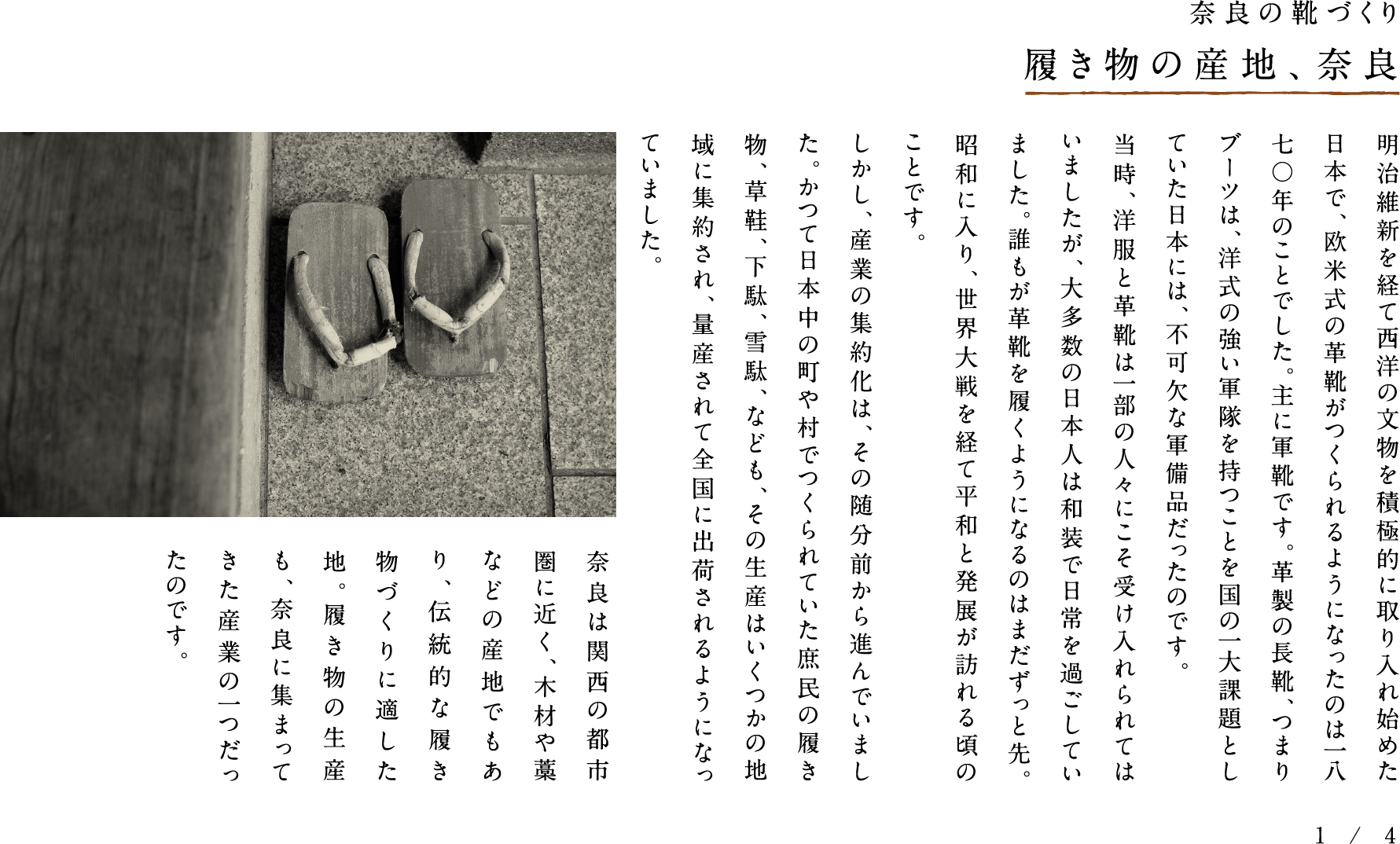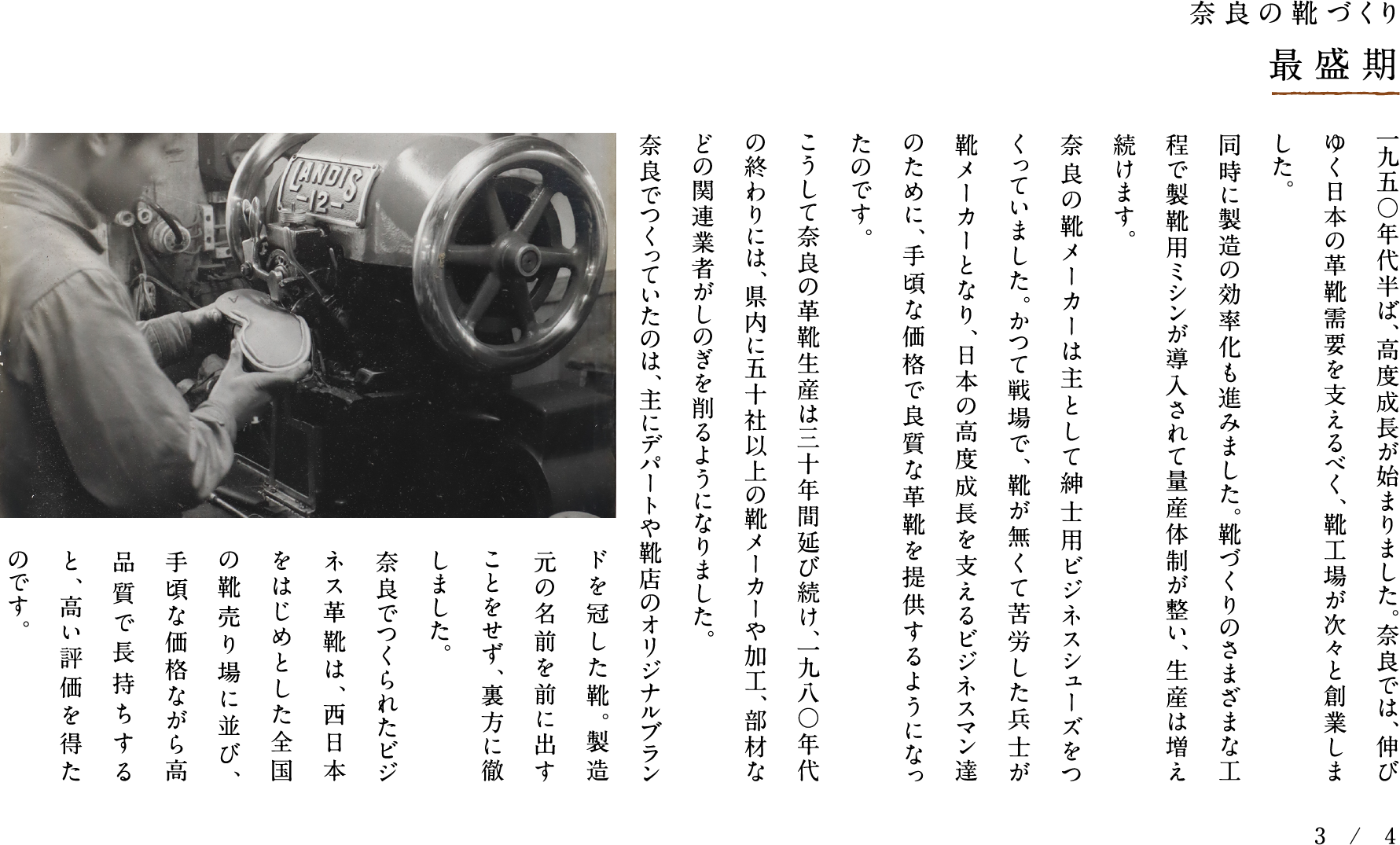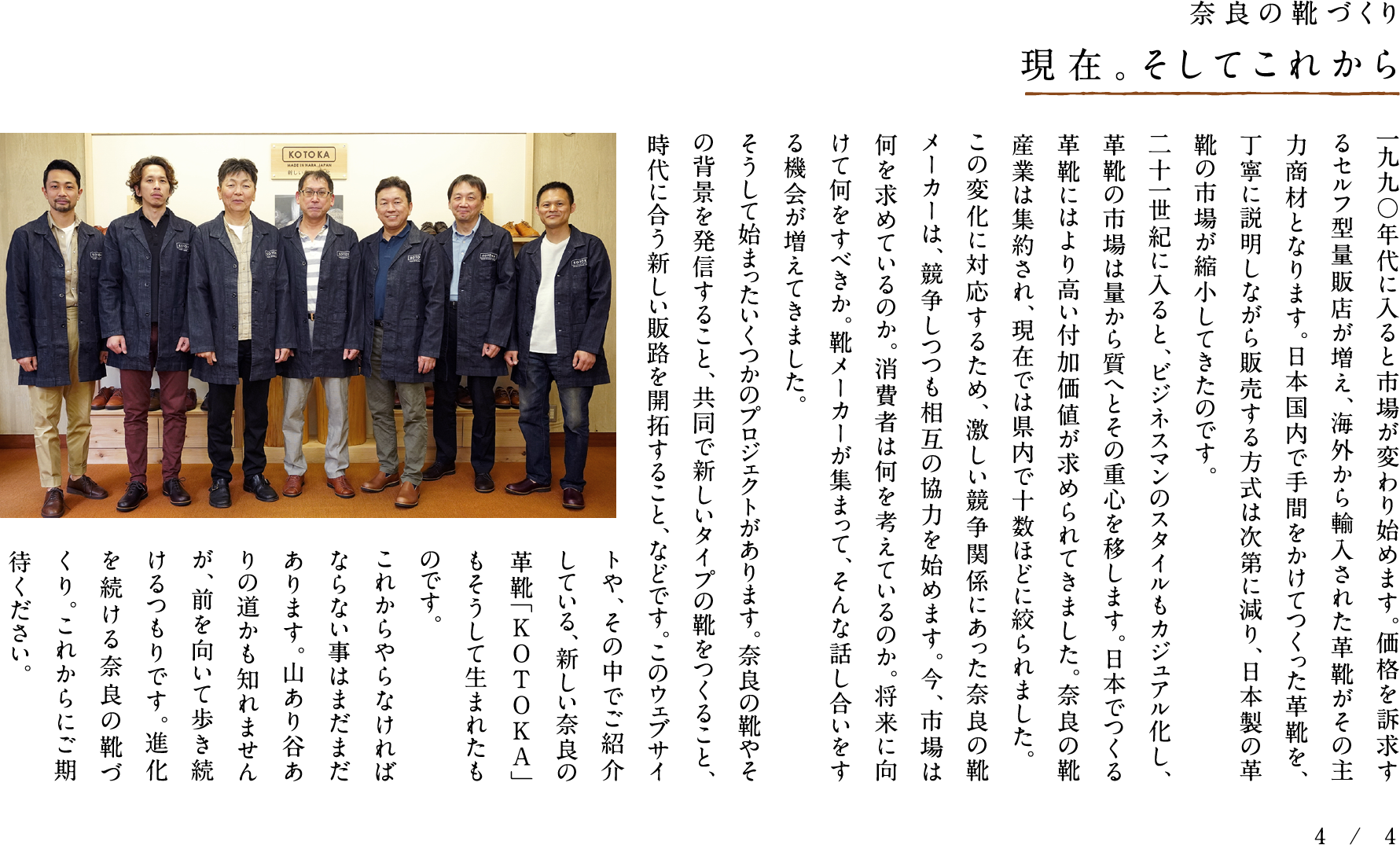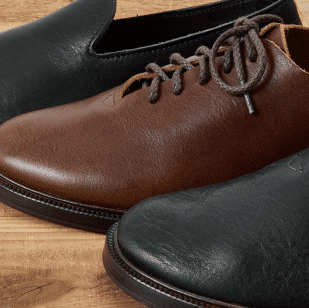KOTOKA’s Leather
Himeji Pigmented Leather

-
The features
Along with the neighboring Tatsuno, Hyogo Prefecture’s castle town of Himeji is Japan’s leather manufacturing capital. Many tanneries have developed techniques in their own areas of expertise while maintaining divisions of labor.
Among these are tanneries that specialize in primary tanning, where raw hide is turned into unfinished leather, as well as tanneries that are responsible for dying and finishing.
This leather is also the result of responsibilities divided between several tanneries in the two regions of Himeji and Tatsuno. When leather is dyed, large batches are usually placed in large rotating drums all at once. However, in the okazome method, the leather is placed on a platform one piece at a time. Dyes with high pigment content are used for smooth, lustrous leather with minimal unevenness in the coloring. The leather is gently finished by adding oil, resulting in shoes that fit intimately and are comfortable to wear.
How to care
Brushing is all that is required for daily care. Remove dust from the shoes with horse hair brush after you wear them. This simple process takes less than a minute and makes a big difference in the long run if you remember to do it each time. If your shoes get wet or muddy in the rain, wipe them with a dry cloth before applying the brush.
If your shoes get wet or muddy in the rain, wipe them off with a soft cloth and allow them to dry naturally.
If the surface of the leather loses smoothness, or if you would like to add luster, use a small amount of shoe cream to spread a thin layer over the entire shoe and polish it with a brush or soft cloth. It is useful to have a colorless shoe cream that can be used on any color of leather.
To restore color to spots where it has faded due to scuffs or scratches, use a cream with a color that is similar to the color of the leather. This allows you to restore color to faded areas while adding luster.







